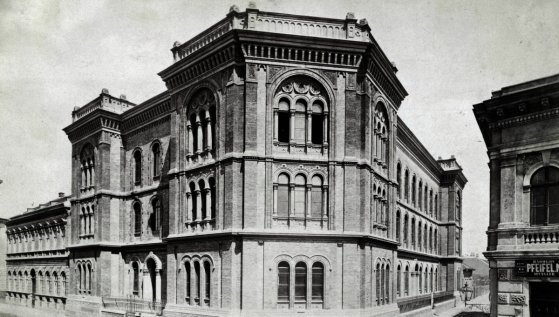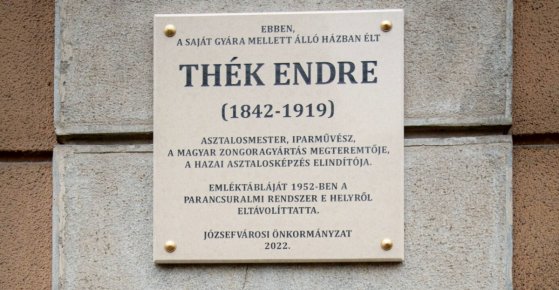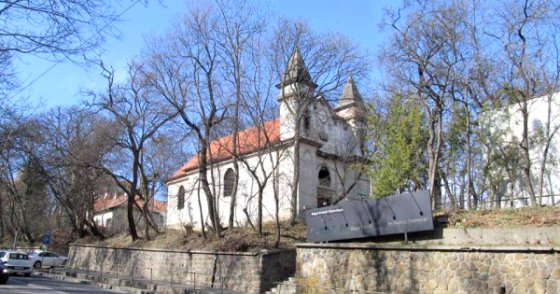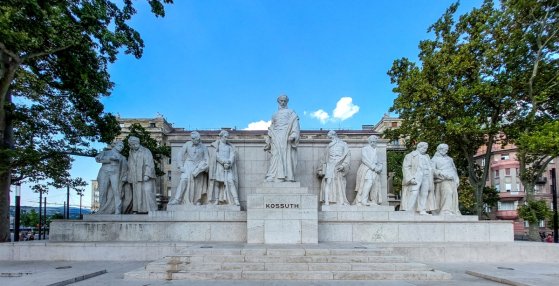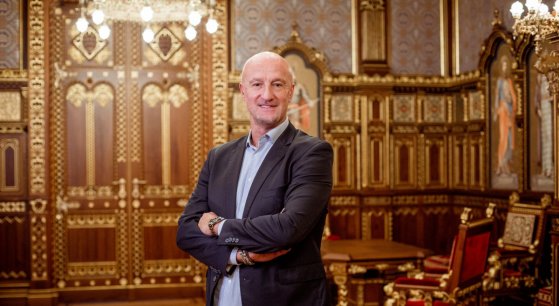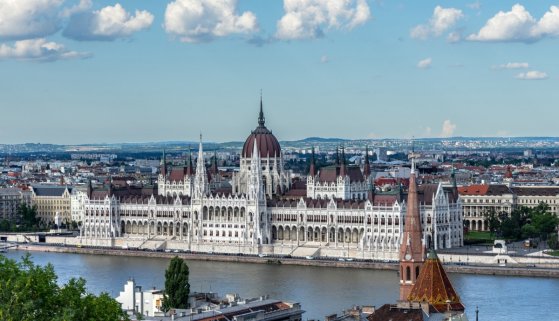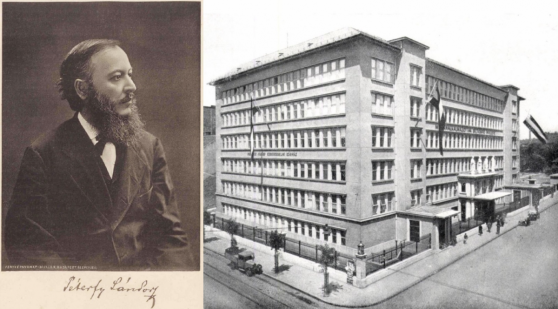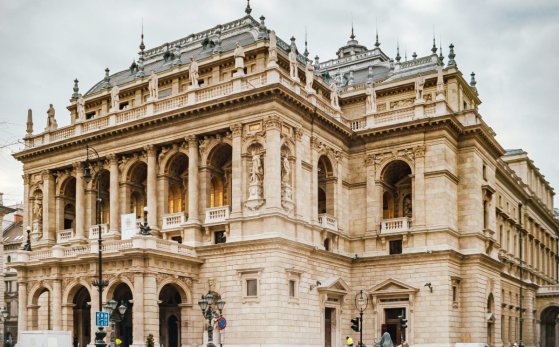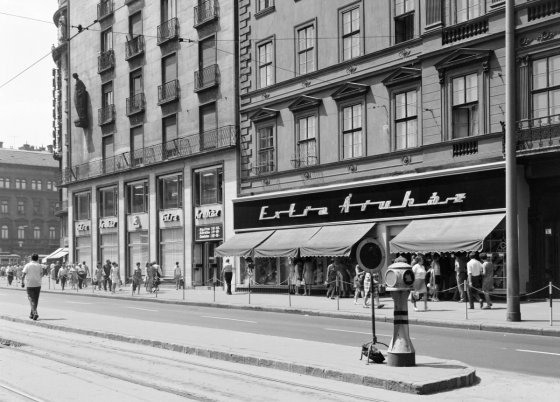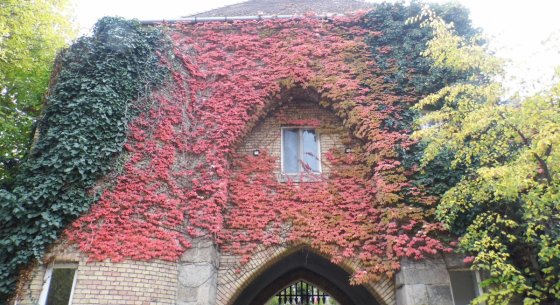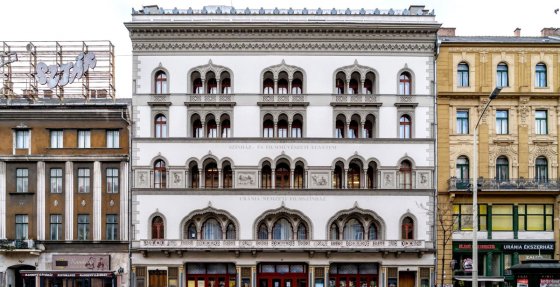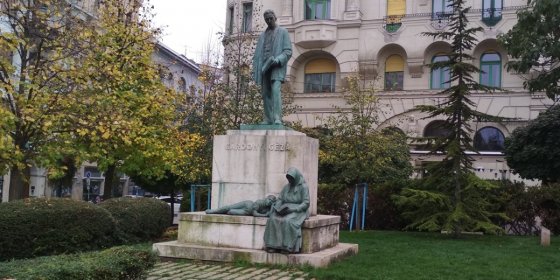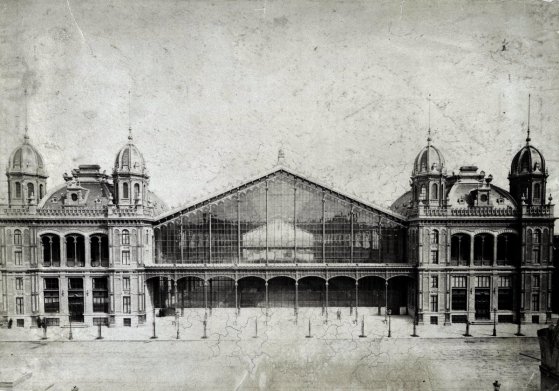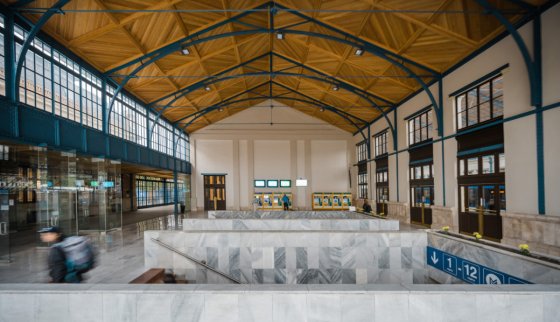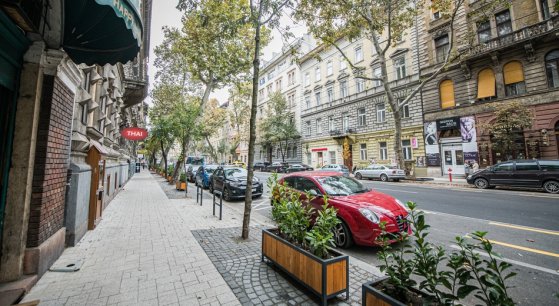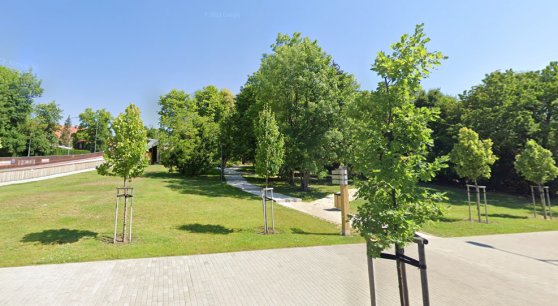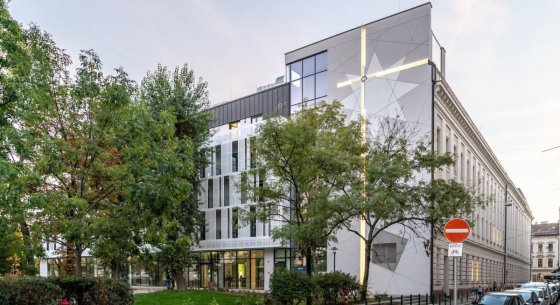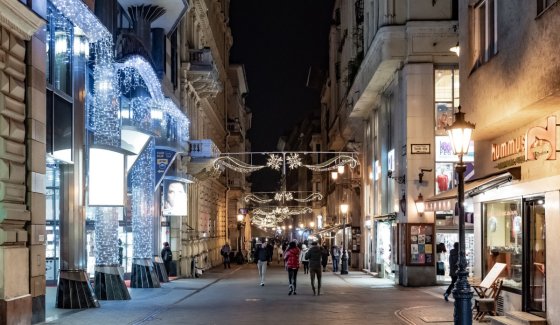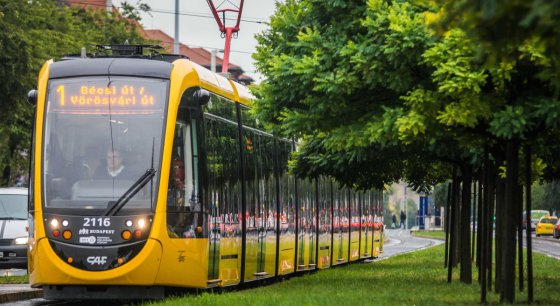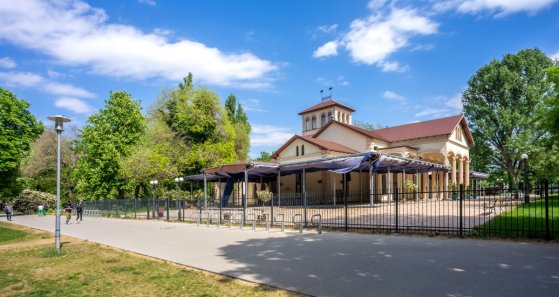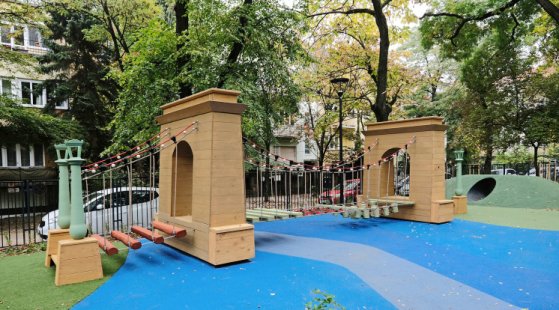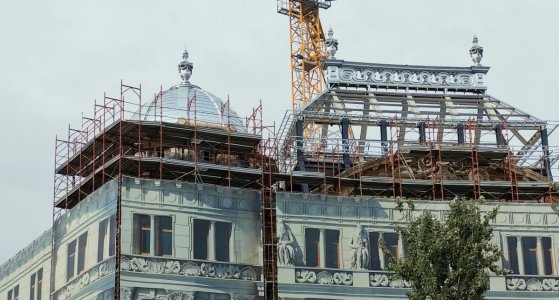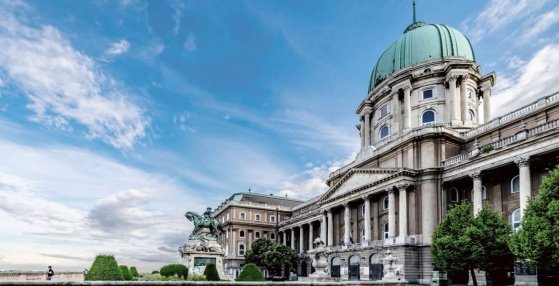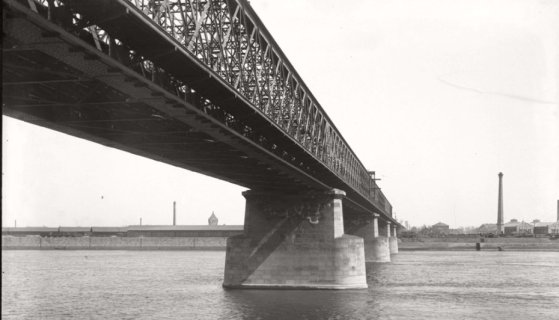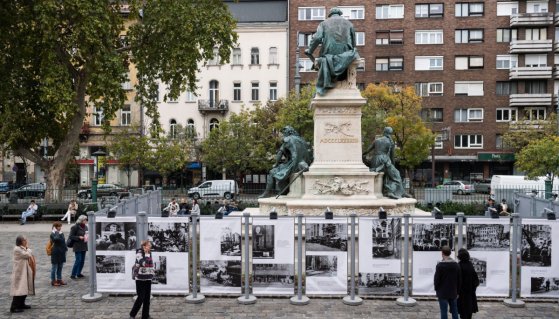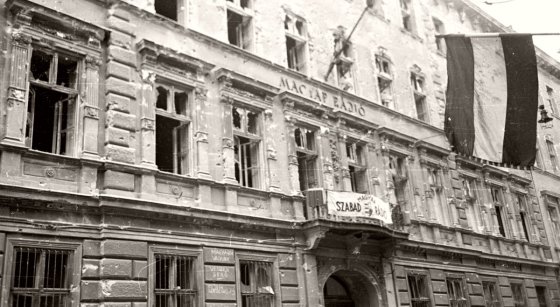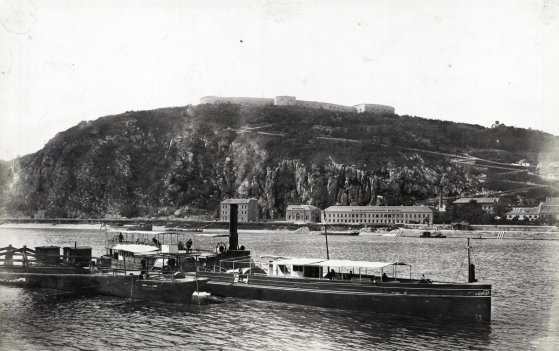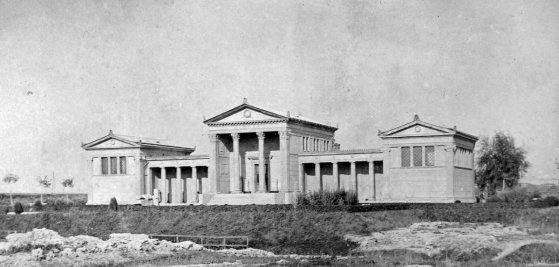 The „intertwined history” of the bridges and the city of Budapest
Which ideas and events have shaped the fate of bridges of Budapest and the cityscape? Alongside many other interesting facts, this question is also answered this newly published book by the Budapest City Archives, which introduces the history of bridges in Budapest.
The „intertwined history” of the bridges and the city of Budapest
Which ideas and events have shaped the fate of bridges of Budapest and the cityscape? Alongside many other interesting facts, this question is also answered this newly published book by the Budapest City Archives, which introduces the history of bridges in Budapest.
PestBuda
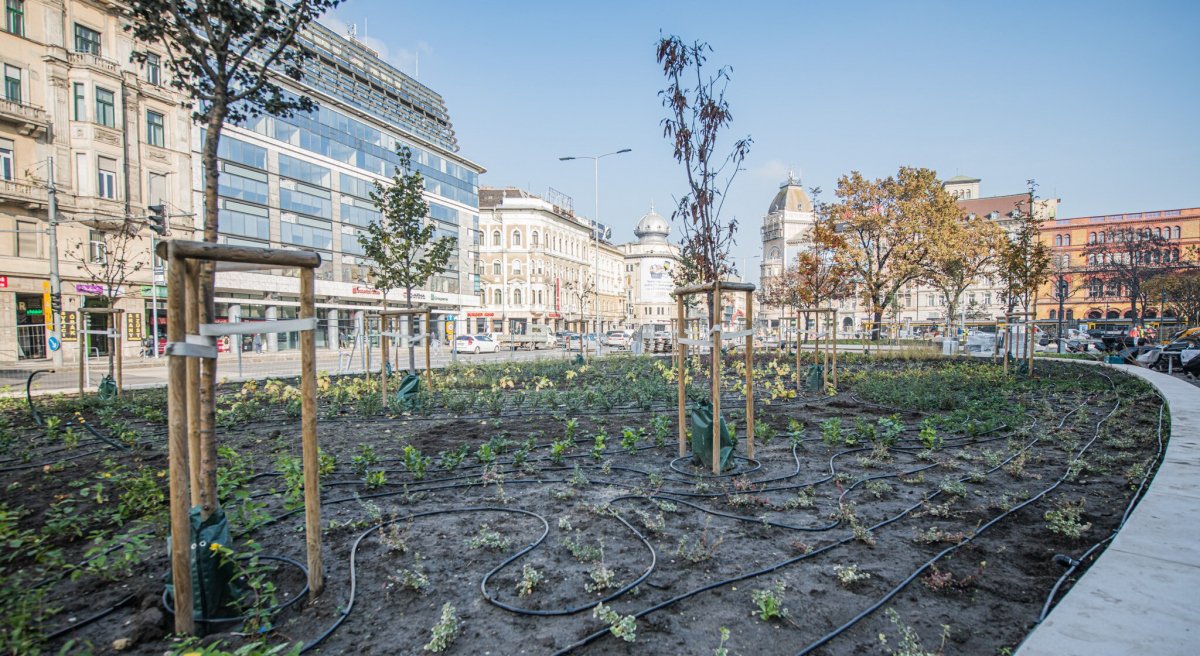 Eighty trees are planted on Blaha Lujza Square
Eighty trees are planted on Blaha Lujza Square
November 9, 2022 at 1:30 PM
The planting of trees has begun in Blaha Lujza Square, which is under renovation: a total of eighty new trees are being planted in the boxes previously created for them. In their surroundings, a skeletal soil was built to help the roots grow. It will remind people of the National Theatre, which was demolished and blown up in 1965, that the outline of the building will appear in the paving, and burgundy-coloured public furniture referring to the theatre's former chairs will be placed in the square. The renovation will be completed this year.
The rabbinical seminary opened its doors in Budapest 145 years ago
November 8, 2022 at 4:00 PM
In Budapest, at the corner of Bérkocsis and Bodzafa Streets in the Józsefváros district - at the intersection of today's Gutenberg Square, Scheiber Sándor and Somogyi Béla Streets - in October 1877, a solemn event took place that was rare even in the world of the time. The rabbinical seminary, in which Israelite students began their studies, opened its doors to the Hungarian Jewish people.
Endre Thék's memorial plaque was inaugurated in Józsefváros
November 8, 2022 at 11:30 AM
Endre Thék was the biggest figure in Hungarian furniture production. In honour of the master woodworker, furniture and piano manufacturer, a memorial plaque was placed on the building under 66C Üllői Road in the 8th District, where his home was. At the current inauguration, the original plaque removed in 1952 was replaced.
The Ferenchalmi Chapel is two hundred years old
November 7, 2022 at 5:30 PM
The Chapel of the Virgin Mary of Ferenchalom, located on Budakeszi Road, was consecrated two hundred years ago. The church, which is under monument protection, is now facing functional and architectural renewal. On the occasion of the jubilee, the Hungarian Charity Service of the Order of Malta opened a model and photo exhibition.
The speeches would have lasted four weeks if everyone had had the floor at the inauguration of the Kossuth Statue
November 6, 2022 at 1:30 PM
Sixty thousand people showed up at the inauguration of the Kossuth Statue that day, wreaths were laid by the country's top leaders, representatives of Hungarian settlements, the delegation of the United States and the city of Turin, representatives of countless foreign countries, but the Catholic Church was left out, and members of the Czechoslovak, Yugoslav, and Romanian embassy did not participate either. The monument was inaugurated 95 years ago today, on 6 November 1927, but the event was accompanied by huge controversies.
Marco Rossi in the St. Stephen's Hall
November 4, 2022 at 6:30 PM
Since its opening in August 2021, more than 100,000 people have already visited St. Stephen's Hall and the related exhibition. Marco Rossi, the captain of the Hungarian national football team, was the 100,324th visitor.
The interior renovation of the Parliament has been postponed
November 4, 2022 at 1:00 PM
Although the external renovation of the 120-year-old Parliament has been completed, its energy, mechanical, security systems and electrical network must also be modernised. The government decision published in Wednesday's issue of Magyar Közlöny talks about examining the possibilities of the expected multi-year internal renovation. The government has decided that when it is financially possible, it will support the start of the internal reconstruction of the Parliament, which is outdated in many ways.
From the Father of teachers to the hospital of the revolution - Sights of Péterfy Sándor Street
November 4, 2022 at 9:00 AM
Péterfy Sándor Street is one of the characteristic streets of Külső-Erzsébetváros, the so-called Csikágó [Chicago, written as it is pronounced in Hungarian] quarter. It owes its fame mostly to its hospital and the events that took place there in 1956, but its namesake, the Hungarian "Father of teachers", also lived here. Its characteristic streetscape consists of residential buildings with circular corridors built during the Dualism, but it is also in contact with the country's first official kindergarten teacher training institute, a former brewery warehouse and a former market square. Take a look at what this street is all about.
The Medgyaszay Hall in the Opera House building was inaugurated
November 3, 2022 at 6:30 PM
A new event space of 430 square metres was handed over in the building of the Opera House. The Medgyaszay Hall, which can accommodate 100 people, can also be home to song evenings, exhibitions, chamber concerts, youth programs, choir and children's choir rehearsals.
Bauxite concrete panic in Budapest - All affected houses were inspected 55 years ago
November 3, 2022 at 11:00 AM
In the 1960s, experts assumed with horror that a time bomb was ticking in the buildings of Budapest. A hotel ceiling crashed in, an apartment building began to crack incredibly fast right in front of an architecture professor. Bauxite concrete was responsible, so they searched and examined all the affected buildings in the capital. All this happened 55 years ago.
Art Nouveau on tombstones - An attempt to renew cemetery art
November 2, 2022 at 10:00 AM
Around the Day of the Dead, many of us visit the graves of our loved ones, and at this time we can discover that the cemetery is also a repository of real works of art. At the beginning of the 20th century, Art Nouveau, which broke with classical forms, permeated this area as well, and artists tried to offer new solutions to those who ordered tombstones. One of the most enthusiastic of them was the sculptor Richárd Füredi, who together with two of his colleagues organised an exhibition to introduce his works reflecting the new taste to the general public.
Candle lighting at the graves of our national greats in the Fiumei Road Cemetery
October 31, 2022 at 5:00 PM
In the Fiumei Road Cemetery, on 1 November, candles are provided for all those who wish to remember our national greats who rest in the cemetery. Visitors can also participate in a celebratory mass.
All rooms of Uránia can be visited again
October 30, 2022 at 7:00 PM
After an absence of nearly seven years, the two basement rooms of the Uránia National Film Theatre, which are located below the Main Hall, reopened this month. The Fábri and Csortos screening rooms had to be closed in 2015 due to water damage.
The hermit of Eger was a regular guest of Pest's coffee houses - Géza Gárdonyi died a hundred years ago
October 30, 2022 at 10:00 AM
Although his name lives on in the public consciousness as a hermit of Eger, Géza Gárdonyi was a regular figure in the cultural and literary life of Budapest at the turn of the 19th century. He was an eyewitness to the development of the city, as a journalist he reported for years from the Old House of Representatives, he visited the famous artist's salon of the Fesztys, but he was also considered a regular guest at the Centrál, the Valéria or the New York Café. Pestbuda now remembers Géza Gárdonyi, who died 100 years ago today.
The railway station that was cut in two
October 29, 2022 at 11:00 AM
By the beginning of the 1870s, the first railway station in Pest - the predecessor of Nyugati (Western), then known as Pest Station Building - was no longer able to handle the ever-increasing railway traffic smoothly. The owner railway company started the expansion, but then it turned out that the building stood in the way of the planned Outer Ring Road. Therefore, the old hall was "halved" and a new railway station was built over its northern part. The Nyugati Railway Station, as it is known today, was handed over on 28 October 1877, i.e., 145 years ago.
The Marble Hall in Nyugati was handed over, a significant part of the roof was completed
October 28, 2022 at 8:30 PM
The renovation of the roof structure of the 145-year-old Nyugati (Western) Railway Station began in the spring of 2020 and the reconstruction of important parts of the building complex has now been completed. The roof is completed over the Marble Hall, the international waiting room, the former ABC, the Cegléd Corridor and the office wing facing Nyugati Square. In addition, passengers can now use the renovated Marble Hall and the Cegléd Corridor.
Trees, plants, street furniture: Podmaniczky Street within the Outer Ring Road has been renewed
October 28, 2022 at 7:30 PM
The section of Podmaniczky Street in the 6th District between Teréz Boulevard and Bajcsy-Zsilinszky Road was renovated: the sidewalk became wider, new trees were planted, and a new traffic light intersection with three pedestrian crossings was established at Jókai Street. Bicycle lanes were created in both directions, there are fewer parking spaces and more vegetation.
Several public areas will be renamed in the capital
October 28, 2022 at 2:00 PM
In the 14th District, a park is named after Eszter Pécsi, the first Hungarian female architect, and Margit Slachta, the first Hungarian female parliamentarian. A section of Eötvös Road in the 12th District will become the Kopp Mária Promenade.
Light permeates the reborn Ráday House
October 28, 2022 at 9:00 AM
Large-scale construction had been going on in Ráday Street, and especially Markusovszky Square, in recent years, the veil has recently been lifted: the new building of the Ráday Dormitory, which burned down in early 2019, has been completed. The works also included the renovation of the original centre, so an entire block of buildings was reborn in the heart of Ferencváros. Old and new blend together harmoniously, perfectly expressing the Christian values prevailing between the walls.
There will be no decorative lighting for Christmas in the capital
October 27, 2022 at 8:30 PM
According to the decision of the General Assembly of Budapest, there will be no decorative Christmas lighting in streets managed by the capital, for example, Váci Street, Városháza Park, part of Andrássy Avenue and Batthyány Square.
Budapest to buy new low-floor, air-conditioned trams
October 27, 2022 at 9:30 AM
Another twenty new CAF-type trams may enter service in Budapest in 2024. The General Assembly of Budapest decided on the purchase of the trams on Wednesday.
The capital imposed building tax on properties on Margit Island
October 26, 2022 at 7:30 PM
From 1 January, building tax must be paid on privately owned properties on Margit Island worth more than one billion HUF - this was decided by the General Assembly of Budapest on Wednesday. Budapest's leadership is encouraging the districts to follow the capital's example and impose a building tax on privately owned apartments worth more than one billion HUF.
A Reform-era playground was built in the 12th District - Children can learn about the city's past
October 26, 2022 at 12:30 PM
Playground equipment based on the Chain Bridge, the Buda Castle Tunnel, the Cogwheel Railway and the Kisfaludy Steamboat will also appear at the completely renovated Hollósy Simon Street playground in the 12th District. The 19th-century past of the Hegyvidék and the capital, especially during the Reformation period, is recalled by the special structures, as well as by the tableaus on which pictures, descriptions and QR codes depicting the era are placed.
The domes of the Adria Palace are already in place
October 25, 2022 at 2:00 PM
The restored domes of the former headquarters of Adria Royal Hungarian Sea Navigation Company on Szabadság Square can already be seen. The facade and roof ornaments of the palace, designed by Arthur Meinig are being renovated based on archival photos.
From the Curia's building to the City Park: the Hungarian National Gallery opened 65 years ago
October 25, 2022 at 10:00 AM
The Hungarian National Gallery is one of the best-known institutions in the country and the capital, which celebrates its 65th anniversary this year. The institution, which collects masterpieces of Hungarian art, opened its doors to visitors on 5 October 1957 in its first home, in the Curia's building on Kossuth Square designed by Alajos Hauszmann, to which the Museum of Ethnography later moved. It occupied its current location, buildings B, C and D of the Buda Castle, in 1975. Within the framework of the Liget Project, the plans for the new home have already been drawn up, although its implementation is still pending.
Trains have been able to cross between Pest and Buda for 145 years
October 24, 2022 at 12:30 PM
The most important Hungarian railway bridge was handed over on 23 October 1877 on the southern border of Budapest at the time. It served railway traffic for only 36 years. The construction of the original structure was accompanied by many disputes, and several lawsuits were started after the investment was completed.
An open-air photo exhibition opened in the garden of the National Museum
October 23, 2022 at 1:00 PM
An outdoor photo exhibition called "Hope and Drama - Hungary '56" opened in the Museum Garden. The exhibition, which can be visited until 27 November, commemorates the heroes of the 1956 revolution and the solidarity of the Polish people. The black-and-white pictures bring to life the events that took place on the streets of Budapest. The original photos were taken by an unknown Polish person.
Where the armed uprising began - The siege of Hungarian Radio on 23 October
October 23, 2022 at 9:00 AM
One of the symbolic locations of the 1956 revolution in the capital was the Hungarian Radio building on Bródy Sándor Street. It was here that the flame of freedom was ignited for the first time in Pest, which spread not only to significant areas of the capital, but also to many other parts of the country, and even to some settlements beyond the border. Pestbuda now revives what happened at the Radio in the recollections of those who themselves were there during the fighting or took part in the siege.
Budapest acquired two hated buildings 125 years ago
October 21, 2022 at 10:00 AM
Several well-known symbols of oppression of Hungary and Budapest stood in the centre of the capital even in the decades after the Austro-Hungarian Compromise. One is the Citadella fortress built to intimidate the city after the defeat of the War of Independence on top of Gellért Hill, and the other is the huge New Building, also known as the prison of soldiers of the 1848 national army, with a bad memory, on the site of today's Szabadság Square. Budapest acquired these two military facilities in October 1897. The New Building was demolished in a short time, but they could not do anything with the Citadella for decades.
They collected memories of old times - Budapest founded a museum 135 years ago
October 20, 2022 at 3:00 PM
Budapest's position as the capital provides many advantages but sometimes it also comes with disadvantages. This was also the case in the area of museums: because the Hungarian National Museum was established here in 1807, the capital was able to establish its own institution only eighty years later - after many rural settlements. However, on 20 October 1887 - exactly 135 years ago - the decision was finally made and the Capital Museum was established.
More articles
 The „intertwined history” of the bridges and the city of Budapest
Which ideas and events have shaped the fate of bridges of Budapest and the cityscape? Alongside many other interesting facts, this question is also answered this newly published book by the Budapest City Archives, which introduces the history of bridges in Budapest.
The „intertwined history” of the bridges and the city of Budapest
Which ideas and events have shaped the fate of bridges of Budapest and the cityscape? Alongside many other interesting facts, this question is also answered this newly published book by the Budapest City Archives, which introduces the history of bridges in Budapest.
 The Bridge Report, which brought a turning point in the history of Budapest
A travel report that changed the history of Pest and Buda, as well as Hungary. The little book contributed to the change of half a thousand years of legal customs and the implementation of an investment of unprecedented size and technical quality. This book was The Bridge Report [Hídjelentés in Hungarian].
The Bridge Report, which brought a turning point in the history of Budapest
A travel report that changed the history of Pest and Buda, as well as Hungary. The little book contributed to the change of half a thousand years of legal customs and the implementation of an investment of unprecedented size and technical quality. This book was The Bridge Report [Hídjelentés in Hungarian].
 Drama on the university wall - The heroic monument was planned 95 years ago
In the constant hustle and bustle of the Egyetem Square in Pest, the students may not even notice the monument that decorates the short section of wall between the church and the central building of ELTE. However, it commemorates their predecessors, the heroes who fought for their country in World War I, and those who heroically helped them. The first design of the dramatically collapsing soldier was born in 1928, ninety-five years ago.
Drama on the university wall - The heroic monument was planned 95 years ago
In the constant hustle and bustle of the Egyetem Square in Pest, the students may not even notice the monument that decorates the short section of wall between the church and the central building of ELTE. However, it commemorates their predecessors, the heroes who fought for their country in World War I, and those who heroically helped them. The first design of the dramatically collapsing soldier was born in 1928, ninety-five years ago.

